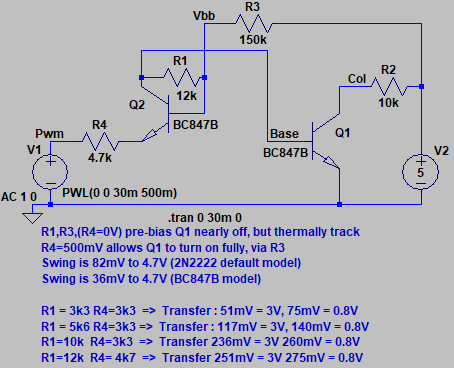Does your function generator have a triangle wave ability ?
Yes. To view all its selectable functions, view photo of function generator below.
Great, then use triangle setting and sweep the voltage from firstly a large range, like -5V to +5V, (10V p-p triangle) and confirm the output does change
somewhere in that span
Then, you can 'zoom in' using offset and gain to check the actual switching point.
My attachments below show how your circuit simulates fine, but also show how it fails when breadboarded and tested on the bench — constant 60mV (basically GND) output instead of a waveform. I am using a pair of 2SC1815 NPN transistors instead of the NPN part number you specified because I don't have your part in my inventory.
Good if you have simulate ok, you have a construction problem.
I see that has many HFE choices
hFE VCE=6.0V, IC=2.0mA (2SC1815) 70 700
hFE VCE=6.0V, IC=2.0mA (2SC1815-O) 70 140
hFE VCE=6.0V, IC=2.0mA (2SC1815-Y) 120 240
hFE VCE=6.0V, IC=2.0mA (2SC1815-GR) 200 400
hFE VCE=6.0V, IC=2.0mA (2SC1815-BL) 350 700
BC847B hFE 200 450
So the 2SC1815-GR should be very close to BC847B, others less so.
If your symptom is 'stuck low' you may have miss matched transistors, here are some more resistor values I tabulated above, that shift the threshold.
When you have this HW working with the -5V-+5V triangle signal, you can fine tune the resistor values to get an appx 250mV threshold for your 500mV? actual signal.
